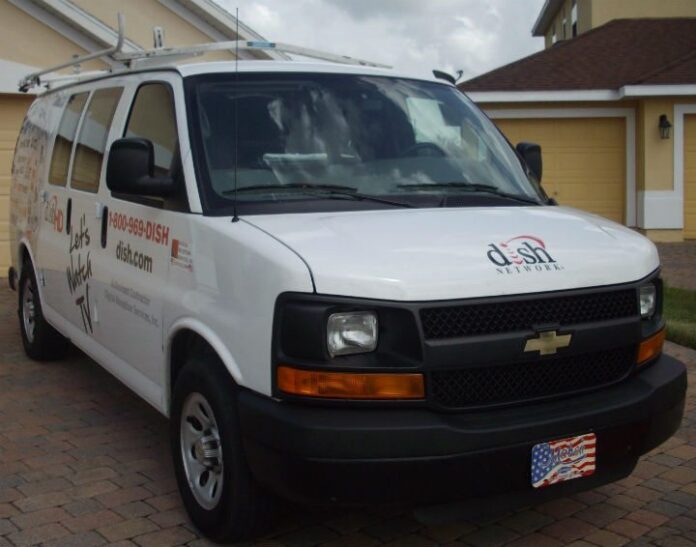Firm announces handful of leadership changes, gains 3GPP band plan in boost to Dish wireless plans
Dish Network rearranged its leadership structure and garnered an important spectrum band plan that could lead to movement in terms of the company’s deep wireless spectrum position.
Dish CEO and Chairman Charlie Ergen is relinquishing his president title to Erik Carlson, who also gained the COO title. Carlson is a long-time veteran of the company, most recently serving as EVP of operations. Carlson will oversee Dish’s “revenue-generating, operating and administrative units,” including customer acquisition and retention, finance and accounting, human resources, marketing, media sales, programming, operations and the company’s newly formed “technology office.”
Ergen took on the president position earlier this year, taking the role – along with the CEO title – from Joseph Clayton who retired on March 31.
Current Dish COO and EVP Bernie Han was moved to EVP of strategic planning, but is said to continue reporting to Ergen. More importantly for the mobile telecom market, Dish hinted at Han overseeing the company’s move into the wireless space.
“Bernie’s unparalleled depth as an operational and financial leader will be indispensable as we advance our work on the strategic transformation of Dish, including our entry into the wireless industry,” said Ergen.
Dish’s entry into the mobile space could be helped by a recent Third Generation Partnership Project approval of Band 66 that pairs Dish’s AWS-4 downlink spectrum holdings with the more widely used AWS-1 and AWS-3 downlink bands in the 2.1 GHz spectrum bands. Band 66 now includes 70 megahertz of uplink spectrum in the 1.7 GHz band with 90 megahertz of downlink spectrum in the 2.1 GHz band.
The 3GPP is also said to be moving forward on plans for a new band to incorporate Dish’s remaining AWS-4 and H-Block spectrum holdings. The move is said to pair 15 megahertz of AWS-3 uplink in the 1.7 GHz band and 25 megahertz of downlink encompassing Dish’s lower AWS-4 spectrum in the 2000-2020 MHz band and H-Block in the 1995-2000 MHz band. Dish spent $1.5 billion on 176 economic area H-Block licenses during the Federal Communications Commission’s Auction 96 in early 2014.
“Similar to Band 66, the proposed band includes a greater proportion of downlink spectrum relative to uplink,” explained Tom Cullen, EVP of corporate development at Dish. “By pairing the AWS-3 uplink spectrum with valuable downlink spectrum on an asymmetrical basis, the overall utility of the spectrum will be enhanced to the benefit of consumers as the growth of applications like mobile video continue to require more downlink capacity.”
Dish said it currently control approximately 75 megahertz of spectrum nationwide, though has so far not moved to launch a commercial mobile service.
Dish drew significant scrutiny for its bidding practices in the AWS-3 auction, which saw the company’s DE bidding partners Northstar Wireless and SNR Wireless pick up $3 billion in bidding credits on their $13 billion in gross bids despite being fully backed by Dish. DE rules allow for a 15% credit for small businesses, which are those with annual gross revenue of less than $40 million for the preceding three years, and 25% for “very small business,” or those with less than $15 million in annual gross revenue. Dish Network has annual revenue nearing $14 billion.
Following an outcry from auction participants, the FCC eventually revoked the bidding credits as well as rewrote rules regarding DE participation in spectrum auctions. Dish last month agreed to return some of the spectrum licenses, valued at $3.5 billion, won by the DEs with the stipulation that if it ends up selling for less when re-auctioned, the Dish affiliates will be expected to pay the difference.
Dish had previously stated the financial uncertainty tied to the AWS-3 spectrum licenses could impact its participation plans for the 600 MHz spectrum auction.
“Obviously, to the extent that the FCC requires us to pay the discount in the last auction, then it would be a complicating factor for us in that auction,” explained Ergen.
Other management changes at Dish include the promotion of Vivek Khemka from SVP of product management to EVP and CTO; Brian Neylon promoted from SVP of sales to EVP of customer acquisition and retention; Warren Schlichting from SVP of programming and media sales to EVP of marketing, programming and media sales; John Swieringa from SVP and CIO to EVP of operations; and Rob Dravenstott from VP of IT application to SVP and CIO.
Dish said the management changes “fulfill the company’s strategic goals and align its business to more fully respond to the dynamic pay-TV environment.” Dish has been bleeding customers from its traditional satellite television service.
Bored? Why not follow me on Twitter

